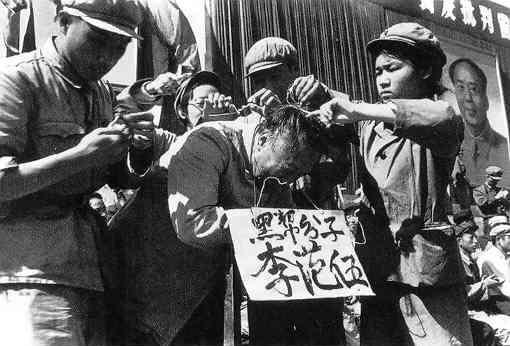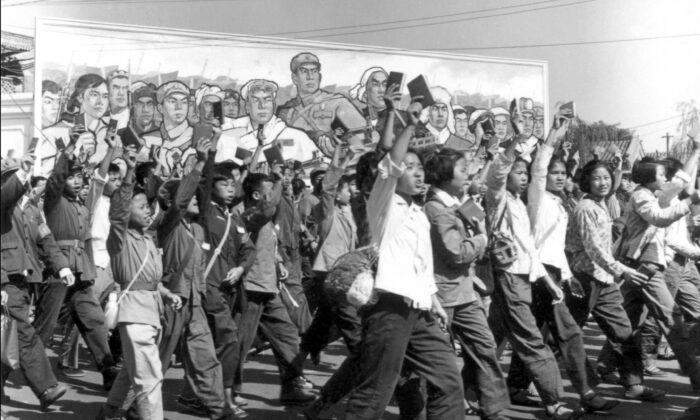Do humans have an inherent right to self-defense? The answer doesn’t depend on the Second Amendment to the U.S. Constitution.
The U.N.’s 1948 Universal Declaration of Human Rights preamble recognizes the right to forcible resistance to criminal governments: “Whereas it is essential, if man is not to be compelled to have recourse, as a last resort, to rebellion against tyranny and oppression, that human rights should be protected by the rule of law.”
Rather than creating a new right, the U.N. declaration was acknowledging an ancient one. Long ago, the “Analects” of Confucius sanctioned popular revolution: “The head of the Ji family was richer than a king, and yet Ran Qiu [a disciple of Confucius and statesman] kept pressuring the peasants to make him richer still. The master said: ‘He is my disciple no more. Beat the drum, my little ones, and attack him: You have my permission.’”
Mencius, the most influential developer of Confucian thought, equated rapacious governors and ordinary robbers, saying, “Now the way feudal lords take from the people is no different from robbery.” So, according to Mencius, killing a tyrannical emperor (namely the “outcast Tchou”) was not “regicide,” but merely punishing a criminal.
Around 140 B.C., the “The Masters of Huainan” explicated Taoist political thought. Expressing the same principles that would later be stated in the U.S. Declaration of Independence, the Taoists argued that governments are instituted for the good of the people; so if government itself destroys security, the people have a right to overthrow the government.
Western Views on Self-Defense
Similar truths were recognized in the ancient West. As Aristotle explained in “Politics,” when citizens are disarmed, they become “in effect, the slaves of the class in possession of arms.” Thus, “tyranny” is based on “distrusting the masses ... consequent upon it, of depriving them of arms.”The fundamental Roman law was the Twelve Tables, which were literally 12 bronze tablets set up in the Forum. Table VIII affirmed the lawfulness of killing a night-time home invader. In the daytime, killing a thief was lawful only if the thief defended himself with weapons.
According to Cicero, the great Roman lawyer and orator of the first century B.C., self-defense against lone criminals and against tyrants were both applications of the natural “instinct of self-preservation.” So “if our life be in danger from plots, or from open violence, or from the weapons of robbers or enemies, every means of securing our safety is honorable.”
Later, the Corpus Juris, a compilation of all Roman law, became the foundation of the legal systems in most of continental Western Europe. Under these laws, “it is permissible to repel force by force” and “arms may be repelled by arms.”
Ancient Jewish law was similar to Roman law. The Book of Exodus authorized the killing of a burglar, unless it was clear that the burglar would not use force against the home-owner. The Talmud explained the general principle: “If someone comes to kill you, rise up and kill him first.”
Under Jewish law, self-defense and defense of others is a positive obligation. But the mainstream of Christian ethics often has allowed the option to be a pacifist. This doesn’t make pacifism mandatory.
Around A.D. 1140, Gratian of Bologna brought together numerous scattered sources to compile what became the unified text of canon law: the Decretum. It began by observing that, “Natural law is common to all nations because it exists everywhere through natural instinct, not because of any enactment.”
Examples of natural law include, “the repelling of violence by force. This, and anything similar, is never regarded as unjust but is held to be natural and equitable.” Self-defense isn’t a privilege granted by government; the right is inherent in the natural order of the world.
Later, Thomas Aquinas elaborated on Gratian’s insights. Self-defense isn’t murder, because the defender’s key intention is to save his or her own life. Likewise, overthrowing a tyrant isn’t “sedition.” “Indeed, it is the tyrant rather that is guilty of sedition,” because tyranny disturbs the proper harmony of society.
Recognizing the right of the people to lawful government, England’s Magna Carta of 1215, Hungary’s Golden Bull of 1222, and the Spanish Castile’s Pact of 1282 all detailed the structures of lawfully armed resistance to a monarch who violated the people’s rights.
The modern system of international law began in the 16th century. Leading theorists such as Francisco de Vitoria and Francisco Suárez of Spain were followed by Hugo Grotius of Holland and Samuel Pufendorf of Germany. All of them extrapolated the international law of war from the natural laws of self-defense.
For example, one may not kill a person who is no longer a threat—such as a home invader who has been apprehended and tied up, or a foreign invader who has become a prisoner of war.
Pufendorf approvingly repeated Grotius’s point that a people would never enter into a social compact that forced the surrender of the right to resist an unjust and violent government. It would be better for people to suffer the “Fighting and Contention” of a state of nature than to face “certain Death” because they had given up the right to “oppose by Arms the unjust Violence of their Superiors.”
Disarmament and Genocide
University of Hawaii professor R.J. Rummel estimated in 1994, the total number of victims of mass murders by governments from 1901 to 1987 at 169,198,000. The figure doesn’t include deaths of soldiers or civilians from war. With 169 million deaths due to mass murder by government, the risk to life from criminal governments is overwhelmingly larger than the risk to life from lone criminals.Genocide is almost never attempted against a well-armed population. Bosnia, Cambodia, China, Guatemala, Rwanda, the Soviet Union, Sudan, Uganda, and Nazi Germany are among the places where genocidal tyrants made very sure that the victim populations were first disarmed. When genocide is initiated against populations that have been incompletely disarmed, as by the Ottoman Empire against the Armenians during World War I, many were able to fight and survive.
Everyone is familiar with the problem of mass shootings by extremists and by persons who are dangerously mentally ill. (The two groups significantly overlap.) The vast majority of these crimes are perpetrated in so-called “gun-free zones.” This continues a historical pattern.
Initially, genocide was carried out by the Nazis using mass shootings. As soon as the Nazi invasion of the Soviet Union began on June 22, 1941, special SS units called Einsatzgruppen were deployed for mass killings. All the Jews or Gypsies (Roma) in a town would be assembled and marched out of town. Then they would all be shot at once.
The mass shooting of a million people would not have been so easy if the intended victims hadn’t been long-disarmed by Communist and Tsarist arms-control decrees.
To the extent that the European Jews in the Holocaust were able to obtain arms, they fought. They participated in partisan resistance at a far higher rate than any other group in Europe. Armed Jews shut down the extermination camps at Sobibor and Auschwitz. The Jews who did fight, usually by escaping into the woods, had a much higher survival rate than did those who stayed behind in the ghettos.
Because there is a right of self-defense, there must necessarily be a right to possess some defensive arms. Otherwise, the right would be a practical nullity. How can a small woman defend herself against a pair of large rapists if she is unable to arm herself?
While social scientists have many disagreements about firearms issues, the above results haven’t been challenged.
As for resistance to criminal governments, the utility and necessity of defensive arms against genocide are well established—including by the assiduous efforts of genocidaires to disarm their intended victims.
The sanctity of the home against violent and unexpected invasion is a widely expressed fundamental human right all over the world. Accordingly, the self-defense right and its auxiliary right to arms are at their apex in the home. Laws that impede home defense are especially egregious violations of human rights.
The inherent, global auxiliary right to arms isn’t necessarily as broad as the U.S. Second Amendment. In some situations, chemical sprays or stun guns might be sufficient. For defense against a murderous government, firearms would be necessary.
While details may vary from country to country, any government that respects the full scope of human rights won’t deprive citizens of the tools to save their own lives.





